PESTS AND DISEASES OF FORESTRY IN NEW ZEALAND
Pests and diseases of poplar (Populus spp.) in New Zealand
Scion is the leading provider of forest-related knowledge in New Zealand
Formerly known as the Forest Research Institute, Scion has been a leader in research relating to forest health for over 50 years. The Rotorua-based Crown Research Institute continues to provide science that will protect all forests from damage caused by insect pests, pathogens and weeds. The information presented below arises from these research activities.
From FRI bulletin No.124 Introduced Forest Trees in New Zealand, Part 17. The Poplars Populus spp. A.G. Wilkinson.
Fungal diseases
The most significant poplar diseases in New Zealand are caused by the poplar leaf rust Melampsora larici-populina (Fig. 1) and the leaf spot or anthracnose fungus Marssonina brunnea (Fig. 2). Both of these leaf diseases thrive in our cool, moist environments and cause early defoliation, reduced root and stem growth, and dieback in susceptible cultivars.
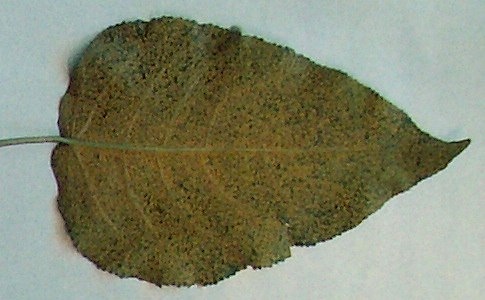
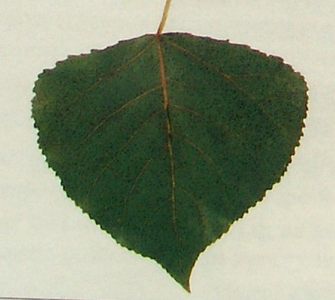
Fig. 1 - poplar leaf rust fungus, Melampsora larici-populina Fig. 2 - Anthracnose (or black spot) fungus, Marssonina brunnea , shown on hybrid black poplar
Two other leaf disease fungi, Marssonina castagnei (Fig. 3) which affects white poplars (especially the widespread female silver poplar cultivar), and Melampsora medusae, an American poplar rust that is well established in Australia, can cause minor problems. Incorporating resistance to all four diseases has been included as an objective in the HortResearch poplar breeding programme.
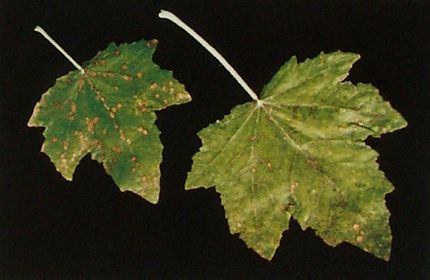
Fig. 3 - Marssonina castagnei , shown here on P.alba ,
causes early defoliation on white poplars.
Maintaining a diverse genetic base for poplar, as well as a population-based, recurrent selection breeding strategy is important. This has been emphasised by the continual appearance of new races of Melampsora rust and the detection of spores of Melampsora, Marssonina and Septoria , as well as bacteria and insect eggs, on seed of poplars and willows imported from the USA.
Exclusion/interception of new pests and pathogens has been reasonably effective in New Zealand due to a high awareness level of the problem and strict quarantine procedures. Nevertheless, the white poplar anthracnose fungus, Marssonina castagnei, appeared only one year after its first detection in Australia. this fungus spread rapidly throughout the country, and severe defoliation and consequent loss in diameter and root growth occurred in the widespread silver poplar clone that played an important role in roadside stabilisation and gully erosion control.
Two other minor leaf diseases are caused by the fungi Taphrina populina (poplar leaf-curl), which causes large orange-yellow blisters on the underside of leaves (fig. 4), and Sphaceloma populi , which causes small to large leaf spots, primarily on leaves of Lombardy Poplar.
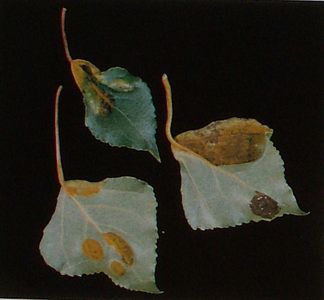
Fig.4 - These orange-yellow blisters on the underside of the leaves of a hybrid black poplar are caused by Taphrina populina .
Armillaria spp. can attack the lower trunk and root system of poplars resulting in slow decline and death. Such infections are associated with site conditions that affect plant vigour such as an intermittent high water table. Armillaria spp. are also effective agents of decay. Chondrostereum purpureum (silverleaf) may invade wounds or cut surfaces (Fig. 5), and has been recorded killing recently established poplar stools. In older plants C.purpureum causes white decay. Other white and brown rot fungi such as Junghuhniana vincta, Rosellinia necatrix, Ganoderma applanatum , and Trametes sp. have been recorded from poplars in New Zealand (pennycook, 1989).
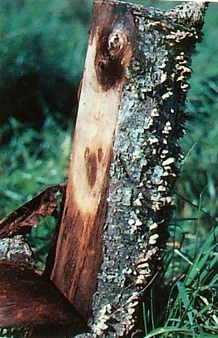
Fig. 5 - Chondrostereum purpureum (silverleaf) on P.trichocarpa in a coppice stoolbed.
Bacterial diseases
In addition to diseases caused by fungi, individual plants within a monocultural planting may suffer bacterial blast and stem cankering caused by the bacteria Pseudomonas syringae and Xanthomonas campestris . this is more common in balsam poplars and some hybrids with black poplars. Affected plants may suffer shoot blackening (Fig. 6) and partial or complete dieback to ground level. If affected tissues are cut away cleanly, however, resprouting from below the damaged zone usually occurs.
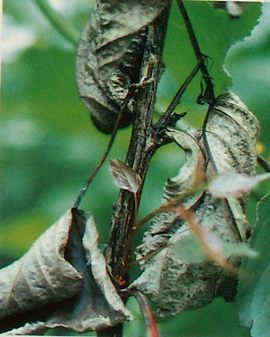
Fig. 6 - Stem blackening is a characteristic symptom of bacterial blast caused by Pseudomonas syringae . The disease is shown here on Populus deltoides X P.ciliata .
Crown gall caused by Agrobacterium tumefaciens can be a major nursery problem for the production of one-year-old rooted plants of aspen and white poplars. Large galls may form at ground level causing girdling of the main stem, poor growth, restricted shoot growth, and toppling. Large galls may occasionally form on the first 1-2 m of the trunk of older trees.
Insect Pests
Insect damage to poplars is generally of minor importance in New Zealand. However, insect pests that have been recorded as locally damaging include the following:
Sapsuckers
- The leafhoppers, Idiocerus distinguendus (on white poplars and aspens) and Idiocerus decimusquartus (on black poplars), cause mottling (symptoms similar to a virus attack) and malformation of expanding leaves on spring growth.
- The green vegetable bug ( Nezara viridula ) sucks sap from the veins, leaf stalks and stems, and can cause localised swelling of young stems and small, sunken lesions in the bark.
Foliage feeders
-The brown beetle or grass grub beetle (Costelytra zealandica) chews leaves from the edges in to the mid-rib, and its larvae may feed on the surface roots. Similar damage can be caused by the green beetle (Stethaspis spp.) and the green manuka beetle (Pyronota spp.). The smaller bronze beetle (Eucolaspis brunnea) may chew leaves to produce a 'shot-hole' effect.
-The brown-headed leaf-roller (Ctenopseustus obliquana) feeds singly on leaves, young stems (cambium) and buds of the host plant while sheltering beneath a web of silk and foliage. Apical buds may be hollowed out and stems chewed. Similar damage may be caused by the green-headed leaf-roller (Planotortrix excessana) or the light-brown apple moth (Epiphyas postvittana).
-Other minor foliage feeders include the bag moth (Liothula omnivora), the katydid ( Caedicia simplex ), and Fuller's rose weevil ( Asynonychus cervinus ).
Gall-formers
-The poplar gall aphid ( Pemphigus bursarius ) forms small purse-shaped galls on the leaf stalks of Lombardy poplar and some P. deltoides .
Wood and cambium feeders
-The lemon tree borer (Oemona hirta) is the main insect pest of poplars in New Zealand. larvae bore in twigs and branches throughout the year, occasionally girdling young stems and causing breakage. It has caused losses in both poplar and tree willow pole production (coppice) nurseries, but usually tends to attach trees under water stress on drier or free-draining soils.
-Other native borers which have occasionally caused problems include puriri moth (Aenetus virescens) and pinhole borer (Platypus apicalis).
Miscellaneous pests
-Large cicadas (Amphisalta spp.) make herring-bone patters of cuts on young branches and stems during egg-laying. These cuts often result in breakage of smaller stems and branches, allowing entry of fungal pathogens and bacteria.
-Honey bees ( Apis mellifera ) collect balsam from elongating shoots of young balsam poplars causing reduced internode extension and bunching of shoot growth.
Possums
The common Australian brush-tailed possum (Trichosuris vulpecula) is by far the most important pest of poplars and tree willows in New Zealand. It prefers to feed on foliage, buds and young fresh bark (adjacent to buds or branches) of the black poplars, P. deltoides and P.nigra . The balsam poplars, P.angustifolia, P.maximowiczii, P.simonii, P.trichocarpa , and P.yunnanensis , vary considerably in attractiveness with at least half the trees within one family being unpalatable to possums. This has been used to advantage in developing possum-resistant black X balsam poplar hybrids such as 'Eridano', 'Toa' and 'Pakai'.
This information is intended for general interest only. It is not intended to be a substitute for specific specialist advice on any matter and should not be relied on for that purpose. Scion will not be liable for any direct, indirect, incidental, special, consequential or exemplary damages, loss of profits, or any other intangible losses that result from using the information provided on this site.
(Scion is the trading name of the New Zealand Forest Research Institute Limited.)

 Farm Forestry New Zealand
Farm Forestry New Zealand

